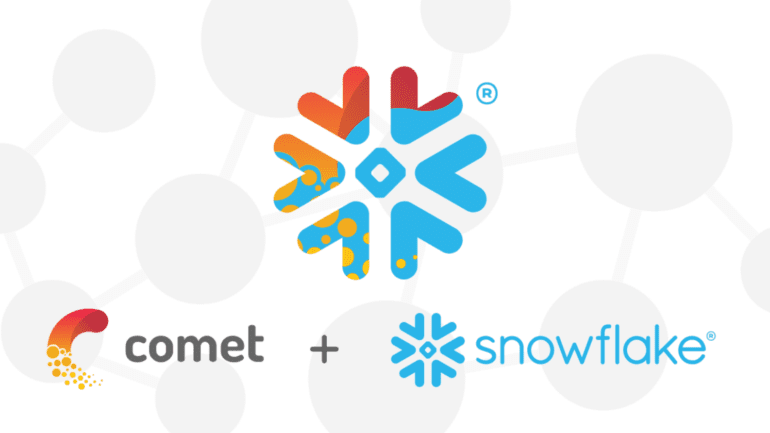TL;DR:
- MLOps platform Comet collaborates with Snowflake to empower data scientists in building ML models more efficiently.
- Integration of Comet’s solutions into Snowflake’s platform enables tracking and versioning of queries and datasets.
- The partnership streamlines model development, enhances visibility and offers valuable insights for improved performance.
- Snowflake’s Data Cloud, combined with Comet’s ML platform, accelerates model training, deployment, and monitoring.
- The continuous feedback loop between Comet and Snowflake drives iterative improvements in models and data management.
- Customers can expect faster research cycles, better collaboration, and significant cost savings.
Main AI News:
Comet, an MLOps platform, has recently announced a strategic collaboration with Snowflake, aiming to empower data scientists in building superior machine learning (ML) models at an accelerated pace. This partnership will integrate Comet’s solutions into Snowflake’s unified platform, enabling developers to track and version their Snowflake queries and datasets within their Snowflake environment.
By leveraging this integration, data scientists will gain enhanced visibility and comprehension compared to traditional development processes. The ability to trace a model’s lineage and performance will provide valuable insights, particularly when responding to changes in data. Overall, this collaboration is set to streamline and bring more transparency to the model development process.
The combined power of Snowflake’s Data Cloud and Comet’s ML platform will significantly expedite the process of building, training, deploying, and monitoring ML models for customers. This collaboration also establishes a valuable feedback loop between model development in Comet and data management in Snowflake, as highlighted by Comet CEO Gideon Mendels. This feedback loop allows for continuous improvements in models, bridging the gap between model experimentation and deployment, which is a key promise of ML—learning and adapting over time. Clear versioning between datasets and models will empower organizations to effectively address data changes and their impact on models in production.
Comet’s new offering complements its recent release of a suite of tools and integrations designed to accelerate workflows for data scientists working with large language models (LLMs).
One of the key advantages of the integration between Comet and Snowflake is the ability to log, version, and directly link queries executed in Snowflake to the resulting models. This approach offers increased reproducibility, collaboration, auditability, and iterative improvement for data scientists and developers. By versioning the SQL queries and datasets, data scientists can always trace back to the exact version of the data used to train a specific model version, which is crucial for model reproducibility.
Moreover, Comet emphasizes the importance of tracing a model’s lineage to establish a connection between changes in model performance and specific alterations in the data. Data modifications, such as introducing new features, addressing missing values, or modifying data distributions, can significantly impact a model’s performance. By tracking queries and data over time, a feedback loop is created, driving continuous improvements in both data management and model development stages.
Comet’s model lineage facilitates collaboration among data scientists by providing a comprehensive understanding of a model’s history and development process, reducing the reliance on extensive documentation. This becomes particularly useful when team members transition or new members join, enabling seamless knowledge transfer.
Looking ahead, Comet aims to solidify its position as the de facto AI development platform. Customers who have already adopted Comet, including industry leaders such as Uber, Etsy, and Shopify, have reported a remarkable 70% to 80% improvement in their ML velocity. This is attributed to faster research cycles, a better understanding of model performance and issue detection, improved collaboration, and more. With the joint solution between Comet and Snowflake, these benefits are expected to further increase as the integration addresses the existing challenges in bridging the two systems. Customers can reduce costs associated with data transfer and storage by leveraging Snowflake’s capability to keep the data within its platform.
Comet’s ultimate goal is to enable businesses to derive real value from AI by deploying models based on their own data. Whether it involves training models from scratch, fine-tuning open-source models, or leveraging context injection for advanced natural language processing tasks like ChatGPT, Comet aims to streamline the entire process, bridging the gap between research and production.
Conclusion:
The strategic partnership between Comet and Snowflake holds great significance in the market. By integrating Comet’s MLOps solutions into Snowflake’s unified platform, data scientists can now benefit from enhanced reproducibility and efficiency in building machine learning models. The ability to track and version queries and datasets within Snowflake provides valuable insights into a model’s lineage and performance. This collaboration streamlines the model development process, leading to faster research cycles, improved collaboration, and significant cost savings for customers. Furthermore, the continuous feedback loop between Comet and Snowflake drives continuous improvements in both data management and model development stages. Overall, this partnership represents a significant advancement in the market, empowering businesses to leverage machine learning more effectively and bridge the gap between research and production.

